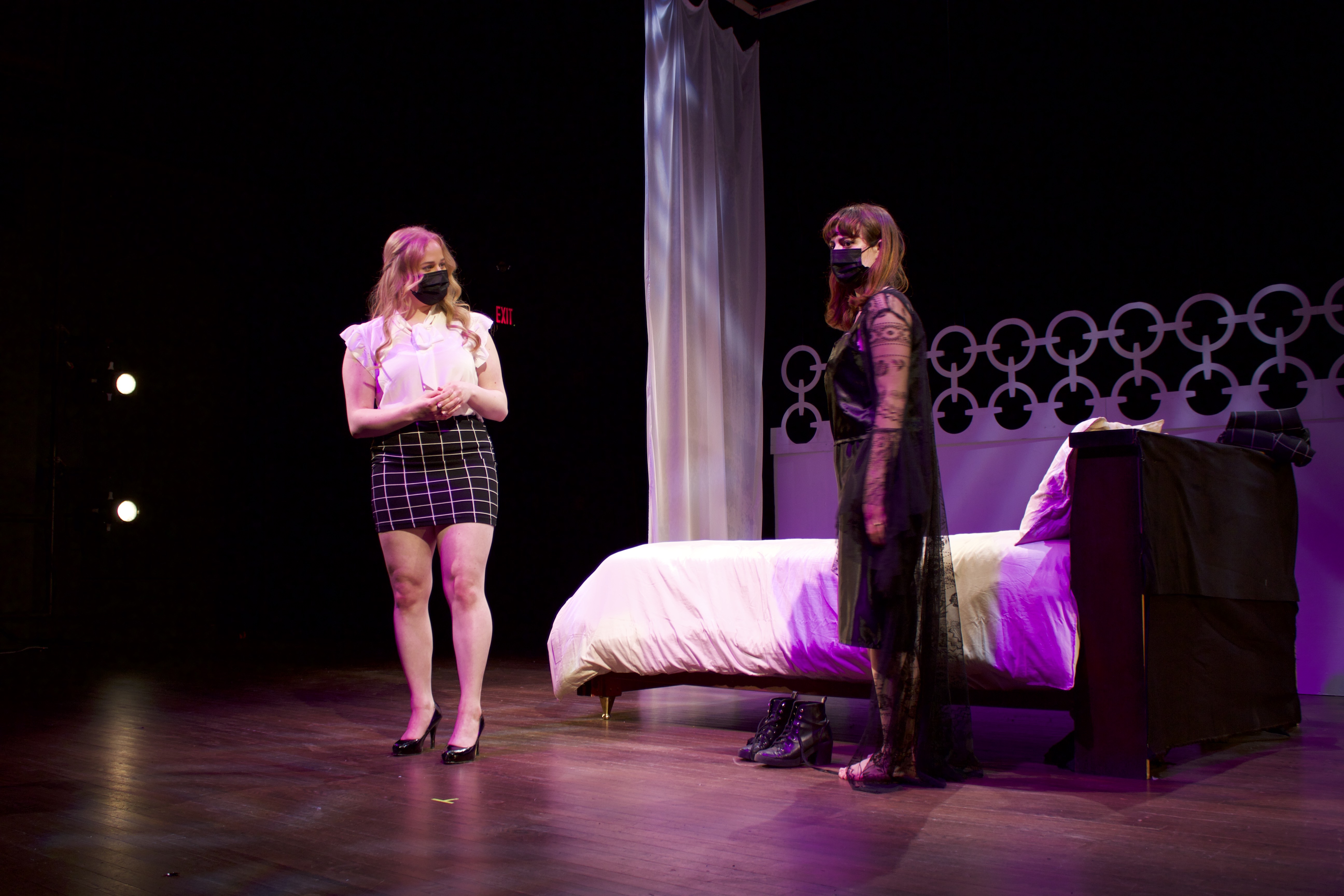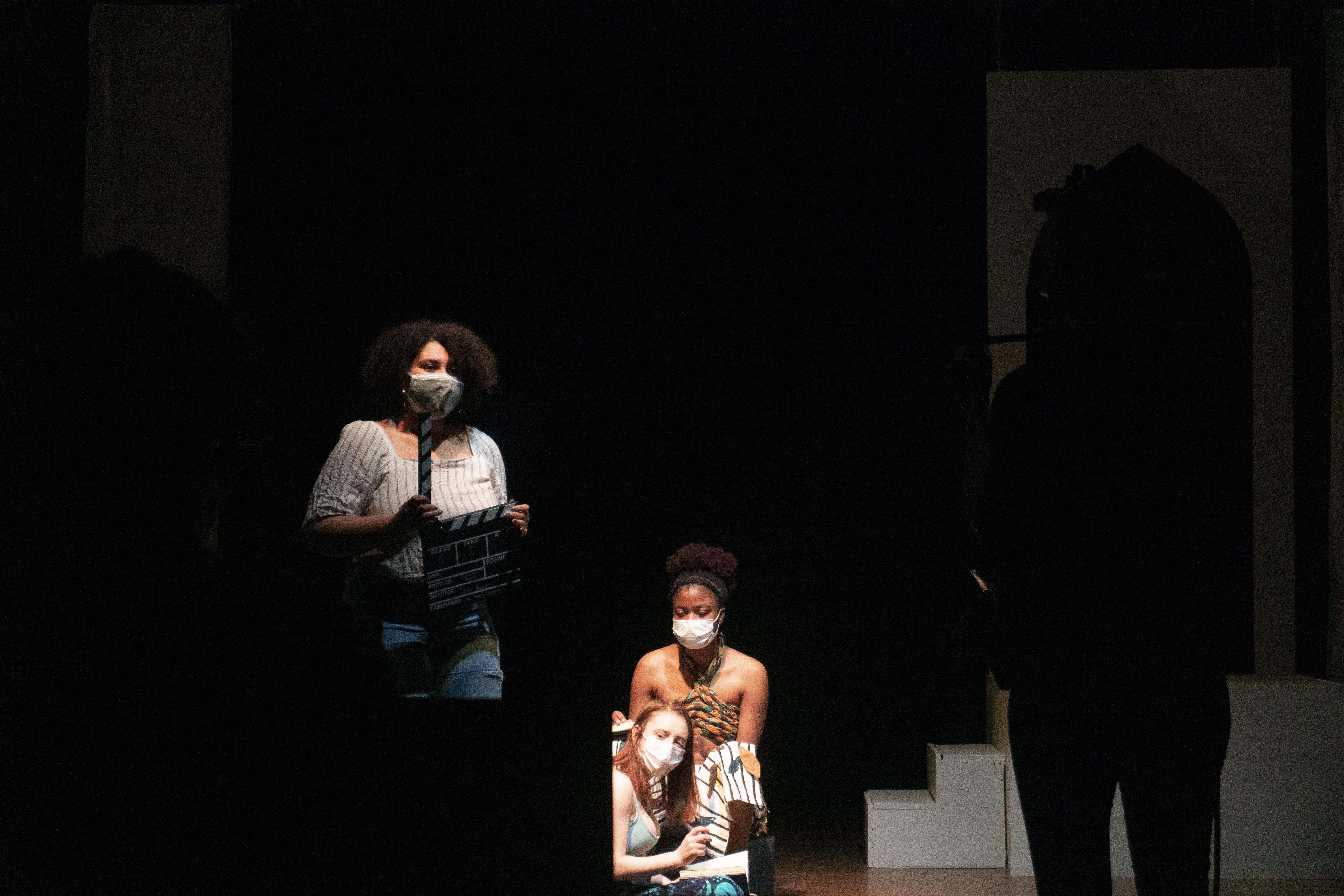
Isabel Algrant ’21 found inspiration for her Theater Department senior thesis in an unexpected place: William Shakespeare’s “Othello.” Though many people point out issues and controversies with the 17th-century play, Algrant said she sees the value in reinterpreting the show in 2021.
“Othello” tells the story of a Black military general living in Venice. When the titular character falls in love with Desdemona, the daughter of a wealthy Venetian man, and marries her in secret, their partnership ignites a controversy in the city. Othello’s supposed confidant, Iago, becomes the villain of the story when he falsely tells Othello that Desdemona has been unfaithful, and at the end of the tragedy, Othello kills her and then himself.
As Algrant explained, “Othello” poses questions and challenges to a modern audience, forcing viewers to reflect on Shakespeare’s contemporary society.
“It’s a very controversial play, because now we have this famous representation of a Black man who’s killed a white woman,” Algrant explained. “And that reinforces a lot of negative stereotypes that we don’t really like to grapple with or deal with. I was reading the play, and all these people were like, ‘this is a racist play,’ and ‘how dare we keep engaging with this character,’ and all of that, and I was like, here’s a character that represents so much of what is wrong with society, that he felt so much pressure to be loved and accepted into this society that he just exploded at the hint of disapproval from someone he cared about. He just couldn’t handle it.”
Algrant described how the meaning of the show has changed for her since she began to engage with it, particularly considering the contemporary dialogue around race and racism in the United States.
“When I read this play a couple years ago, it meant to me, this is about code-switching and trying to fit into white society when you look so different, and what do you do, and I saw a lot of myself in the character that was constantly editing himself to be appealing to people who would never really feel like he was one of them,” Algrant said. “And then the pandemic hit and George Floyd was killed and Black Lives Matter came crashing [into] the front of our brains, and it became a play about how being a Black man is never a safe situation, and you cannot actually be safe in this position, no matter what you do, and that’s kind of what this play is about in the end.”
Part of Algrant’s philosophy in adapting Othello, she explained, was the concept of “radical inclusion.” For Algrant and the cast, this meant that anyone who was interested in being a part of the project was able to do so in some capacity, and those who did not have the time to commit to a position were able to step back over the course of the production.
Out of this radical inclusion concept grew the idea of a braided cast, which was facilitated by Braided Cast Coordinator Esmé Ng ’22. Ng explained that the braided cast represented devised theater, in which all cast members were involved in writing and performing their script and engaging with the work of the show.
“In an attempt to sort of reclaim the white supremacist narrative of Othello in favor of a more non-white lens, [Isabel] had this idea to have a secondary cast of mostly people of color to kind of comment on the play as it’s happening,” Ng explained. “We sort of described it as a half-step up in terms of reality. They’re more of this artistic interlude, I think, this sort of moment to showcase POC art in the midst of a show that is so centered around white violence.”
Ng added that, in a performance that so explicitly centers on racialized and gendered violence, they view the goal of theater-making as facilitating a kind of healing.
“Whenever we were developing a moment, we were always kind of coming back to the idea of, what would you want to say to this character right now, or, we’re in the midst of telling this story right now, what do we actually want to learn from it, how do we heal from this,” Ng said. “And healing has been a really big theme throughout a lot of our creation. I try to always come from a place of catharsis, especially when making theater about trauma.”
Along with the braided cast, Algrant and collaborators also adapted the show to include not one, but three sets: the Venice and bedroom sets, which were situated in the ’92 Theater, and the Cypress set, where the bulk of the play takes place, which was outdoors. Set Designer Dana Kim ’21 explained that, ironically, she hopes that viewers will not pay close attention to the set when viewing the show.
“It kind of sounds weird, but I hope people can pay not that much attention to the set, cause that’s the point of set design,” Kim said. “Sets should not overpower the show itself, it should kind of support the show.”
Kim explained that one of the challenges of designing sets for “Othello” was keeping the black-and-white themed set from looking too monotone, while also drawing the viewer’s eye to the characters.
“Particularly about the set, I want people to know that one thing that I spent a lot of time on is to make sure that the set goes along not only with the story itself, but with the costumes and lighting and everything else,” Kim said. “It was definitely challenging because most of the sets are in black and white and costumes are also in black and white, but it was kind of difficult to find where everything doesn’t look very monotone.”

The main challenge for Kim, though, was working on the set remotely; though she initially planned to return to campus for the spring semester, she ended up staying home in South Korea, and she had to work across time zones to help Associate Set Designer Sam Harris ’23 and Technical Director Elim Grekin ’22 bring the sets to life.
When it became clear during winter break that “Othello” would not be able to be performed in person in a traditional theater setting, Algrant, along with Executive Produce/Stage Manager Anna Buchmueller ’22 and Director of Photography Ana Finnerty-Haggerty ’21, worked to turn the staged version of “Othello” into a theater piece devised for film, coordinating cues for five to twenty minute takes within each scene.
Currently, Sound Designer and Composer Noah Lilienthal, Director of Photography Connell Oberman ’22, Algrant and Finnerty-Hagarty are in the process of editing and finalizing the filmed version of the production, which will be available via livestream on YouTube by the end of the semester. The film version will feature Sadie Goldstein ’24 as Desdemona, Joseph Godslaw ’23 as Othello, Sam Multer ’23 as Iago, Elizabeth Nefferdorf ’22 as Emilia, and Matt Grimaldi ’22 as Cassio; the full cast list is available in the show’s credits.
Algrant added that using technology to bring “Othello” to life also allowed parts of the production process that would usually remain hidden to become visible. Students can access saved Instagram Live videos on the “Othello” Instagram account, @thebraidedproject.wes, which features an inside look at the technical process of creating the show.
Algrant explained that her thesis, which consists of both the production “Othello” as well as a 60 page written component, investigates the meaning of reproducing and interpreting “Othello,” and how the play has taken on different meanings in different historical contexts in the United States.
“What my thesis boils down to is, this play in particular, is always a political act,” Algrant said. “And the question is, how are you acting and what are you doing with that power? So the goal of this work was to say, this is a very powerful tool, and so, this is how we are going to act and this is what we are going to do with that power, which is to say, we are going to be inclusive and we are going to tell a story that people don’t really want to hear, and see what that brings us to.”
Emma Smith can be reached at elsmith@wesleyan.edu.



Leave a Reply